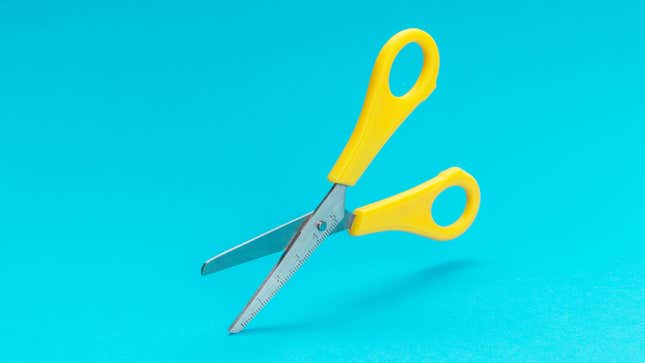
After years of use, scissors can become dull, making cutting difficult. But rather than sentencing them to a life in the back of a junk drawer, you also have the option of sharpening them. Here’s the best way to do that.
How to sharpen scissors
Table of Contents
To determine the best way to sharpen your scissors, you’ll have to factor in how dull they’ve become, the cost and quality of the pair, and whether you want to invest in a product designed for sharpening, or work with what you have at home.
While the most effective ways to sharpen scissors at home are to use a handheld rotary tool (like a Dremel) or a sharpening stone (also known as a bench stone or whetstone), if you don’t already own one, you might as well start with something that you have a better chance of having on hand: Sandpaper. And even if you don’t have some sandpaper sitting around, it’s relatively inexpensive and easy to find.
To sharpen scissors, your best bet is using aluminum-oxide sandpaper with a grit between 150 and 200. The idea is for the abrasive side of the sandpaper to effectively serve as a type of sharpening stone on the dull blades.
Start by (carefully) cleaning the scissor blades, using rubbing alcohol or a solvent like Goo Gone to remove any sticky residue. Then, fold a piece of the sandpaper in half, so that the abrasive side is on the outside.
Next, use the dull scissors to cut the sandpaper into thin strips, making full-stroke cuts. Use a clean rag or paper towel to wipe the blades as buildup accumulates.
When you think you may be done, give the blades a final wipe, and try cutting some paper. If your scissors aren’t back in working order, repeat the process with a new piece of sandpaper.
